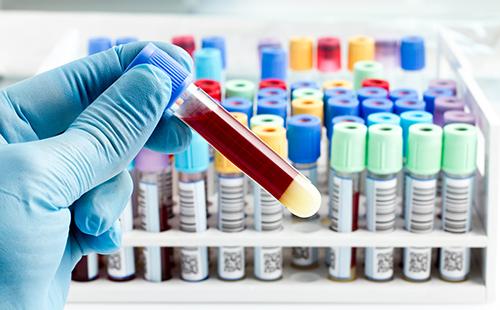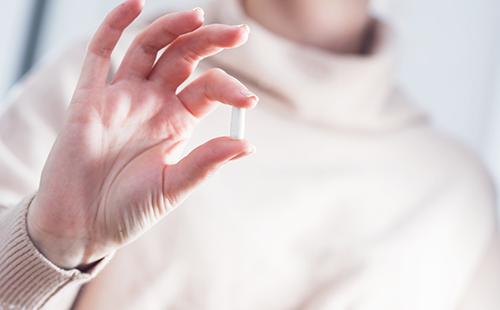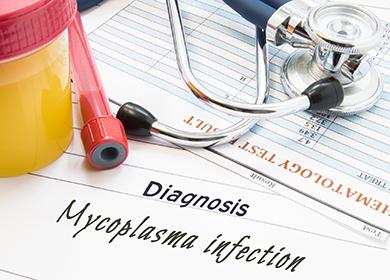The content of the article
Carriage of certain microorganisms does not bring visible harm. But when they multiply, foci of chronic infection form. This leads to permanent inflammatory tissue damage. Therefore, there is an opinion that any infection is subject to elimination. For urea and mycoplasmas, this is not entirely true.
Pathogen Characterization
Mycoplasmas are a special class of bacteria that differs from the rest in the absence of a cell wall. Only a thin cytoplasmic membrane separates them from the environment. Therefore, the bacterium can be in the form of an ellipse, ball, disk, thread. In some cases, as a result of multiple division, they form long threads resembling mycelium of fungi. Therefore, for a long time, mycoplasma was considered a fungus.
The absence of a cell wall explains the resistance of mycoplasmas to antibiotics, the mechanism of action of which is based on damage to this membrane or a violation of its synthesis.
Previously, it was believed that mycoplasma is a parasite in humans and some animals, but later it was revealed many subspecies that are found in soil, hot springs, coal.
In humans, the following types of mycoplasmas are found that have medical significance:
- M. pmeumoniae - respiratory diseases of the respiratory tract;
- M. hominis Urogenital diseases;
- M. genitalium - urethritis;
- M. orale - gingivitis, peridontitis;
- M. fermentans Urogenital tract, respiratory tract.
Ureaplasma has similar morphological properties and structure. Therefore, it is often considered as one of the types of mycoplasmas.
All types of mycoplasmas have a complex antigenic structure, which differs depending on the type of bacteria. It is constantly changing, which allows them to move away from the immune response. Factors of aggression are adhesins (proteins that allow them to attach to cells), toxins, enzymes and metabolic products.
Protease enzymes can cause the death of mast cells (immune cells), break down antibodies, and use essential amino acids for their needs.
Features of infection
Of the urogenital tract, M. hominis and M. genitalium are most often isolated. In ICD-10, mycoplasmosis is encoded in two ways:
- A49.3 - infection caused by mycoplasma, unspecified;
- O98.3 - other sexually transmitted infections that complicate pregnancy, childbirth and the postpartum period.
Scientists and doctors have stopped including mycoplasmas in the group of pathogens. Their role in the development of inflammation is not completely clear. They multiply in the epithelium of the genitourinary system in a limited amount and do not lead to inflammation. But at the same time, they are found with:
- cystitis;
- urethritis;
- cervicitis;
- vaginitis;
- postpartum endometritis.
The cause of mycoplasmosis in women is infection, which can occur in the following way:
- sexual;
- ascending;
- translocation;
- hematogenous.
The translocation path involves the transfer of the pathogen in sufficient quantities from one organ to another, and the ascending path along the path of the vagina-uterus-appendages. Infection of the child may occur by transplacental route.

What happens and how mycoplasma disease develops
Plasmosis disease is classified according to the course and area of the lesion. A detailed system is presented in the table.
Table - Classification of mycoplasmosis
| With the flow | By distribution |
|---|---|
| - Fresh; - sharp; - subacute; - chronic; - sluggish; - carriage | - Urethritis; - vaginitis; - cervicitis; - endometritis; - salpingitis |
After penetration into epithelial cells, mycoplasmas lead to a disruption in the synthesis of proteins, nucleic acids. The consequences of mycoplasmosis for women can manifest as miscarriage. The increase in arachidonic acid and the synthesis of prostaglandins provoked by bacteria are to blame. They are also able to lead to chromosomal rearrangements in germ and embryonic cells.
Symptoms of mycoplasmosis in women
The characteristic signs of mycoplasmosis in women cannot be distinguished. Usually there is a periodic appearance of secretions, itching and burning in the vagina and vulva, discomfort during urination and frequent urination. Symptoms of the disease will depend on the prevalence of the process. If the uterus, appendages are affected, then the aching pain in the lower abdomen is disturbing.
If at the same time treatment is prescribed without an appropriate diagnosis or folk remedies are used, the process fades for a while, but soon recurs. It goes into a chronic course. Such mycoplasmosis is dangerous for women with the following complications:
- chronic endometritis;
- infertility;
- miscarriage;
- fetoplacental insufficiency;
- abnormalities of the fetus;
- high incidence of children in the perinatal period.
How to identify a problem
Detection of the pathogen in a smear without clinical symptoms does not indicate the presence of the disease. It is necessary to use the cultural method - sowing on special nutrient media. To prescribe therapy, 10 mycoplasmas must be isolated4 CFU / ml. Lower values according to the results of the analysis are not taken into account, they can be in absolutely healthy people. Also, this diagnostic method allows you to determine antibiotic resistance.
In the diagnosis of M. genitalium, the culture method is not used, it is very difficult to cultivate. In this case, PCR is used. Previously, this technique allowed to determine only the presence of pathogen DNA in the test material. But methods have already been developed and applied to account for the number of pathogenic microorganisms.

Therapy Features
Treatment of mycoplasmosis in women does not aim to completely get rid of the pathogen. In most cases this is not possible. Effective is considered therapy that can reduce the number of relapses of the disease and reduce the number of mycoplasmas to less than 103 CFU / ml.
Folk remedies are allowed as an adjunct treatment. To stimulate the immune system, cat claw extract in the form of drops is used. It has an interferon-like effect, enhances the body's defenses. At home, even doctors recommend using the extract echinacea.
Compulsory treatment is carried out by everyone only with the allocation of M.genitalium.If other types of mycoplasmas are found in the bacterial sowing, then therapy is prescribed only in the following cases:
- there are severe manifestations of inflammation;
- in women with infertility, miscarriages;
- with pregravid preparation;
- against the background of pregnancy complications.
The treatment regimen for mycoplasmosis includes the appointment of antibiotics for 7-14 days. The sensitivity of microorganisms must be taken into account. The table contains the main drugs for treatment.
Table - Antibiotics for mycoplasmosis
| A drug | Dosage regimen | Number of receptions per day |
|---|---|---|
| Doxycycline | 100 mg | 2 |
| Tetracycline | 500 mg | 4 |
| "Azithromycin" | 250 mg | 2 |
| Josamycin | 500 mg | 2-3 |
| Clarithromycin | 500 mg | 2 |
| Ofloxacin | 200 mg | 2 |
| Spiramycin | 3 million IU | 2-3 |
Most antibiotics are not used in pregnant women. They belong to high classes of danger, can cause a violation of the development of bone and cartilage, auditory ossicles. For pregnant women from the second trimester, only "Josamycin" is allowed.
The course of treatment is supplemented with preparations from the fungus. This is necessary so that against the background of taking antibiotics, candidiasis infection is not activated. The doctor may prescribe "Fluconazole" once before starting mycoplasmosis therapy and in the same dosage after a course of treatment.
For prophylaxis gardnerellosis Therapy is supplemented with Metronidazole. It is prescribed orally or in the form of vaginal tablets, which is safer.
After treatment, you can use vaginal suppositories to restore normal microflora. This will protect against the activation of opportunistic microorganisms and help to recover faster.
The effectiveness of treatment is evaluated two weeks after the end of the course. A positive trend is the reduction in the titer of microorganisms to acceptable values. To evaluate the effectiveness of treatment with M.genitalium, four weeks after the end of taking the drugs, PCR diagnostics are performed.
Conditionally pathogenic flora is present in most people. In a normal state of immunity, its activity is suppressed. But the weakening of protection, serious illnesses can activate the microorganism. Mycoplasma in women refers to such pathogens. For those planning a pregnancy, it is better to undergo examination and, if necessary, treatment before conception, while the list of approved drugs allows you to do this quickly and effectively. In more detail about this disease, you can watch the video and photo.
Reviews
Mycoplasma and ureaplasma are recognized as conditionally pathogenic. Those. in the absence of symptoms of the disease caused by them, only on the basis of the results of the analyzes, it is not necessary to treat. I was also interested in the question, so I did not treat. Everything is OK, pregnancy and childbirth are normal, the baby is healthy.
Optimist http://www.komarovskiy.net/forum/viewtopic.php?t=8874
They gave me the results of all analyzes. there was an analysis of the sensitivity of sores to antibiotics, according to which drugs were prescribed. the course was scheduled for a month, starting from 4 d.ts. for a month I was so "fed up" with these antibiotics that I thought I would go crazy, and was sick, and my head was spinning. and my husband and I pierced interferon ("Eberon"
Natalie, https://deti.mail.ru/forum/zdorove/zdorove_krasota_diety/mikoplazmoz_lechenie/
In my first pregnancy, they discovered mycoplasma, waited for the 20th week and prescribed a bunch of pills, including antibiotics, I consulted with pediatricians in the hospital and they told me not to poison the baby and not to drink anything, but to clear the birth canal before giving birth (douched miramistin several days). Doctors said that in the west mycoplasma has not been considered a disease for a long time and is not treated ... As a result, she gave birth to a healthy daughter on time. Mycoplasma had no effect.
Yuliya, https://www.baby.ru/community/view/73449/forum/post/5923427/

